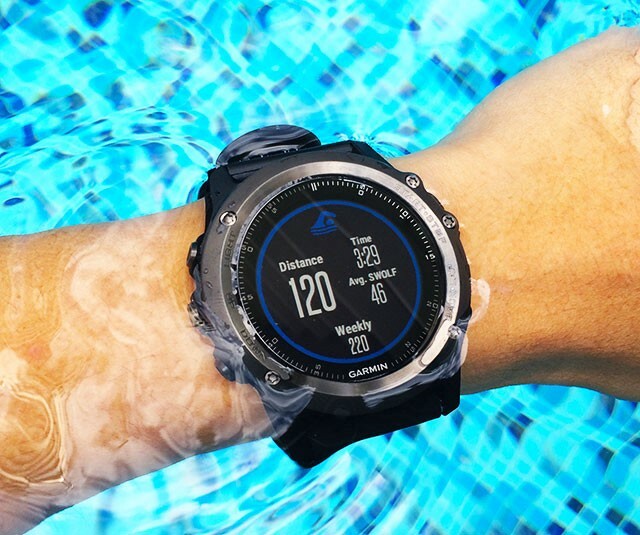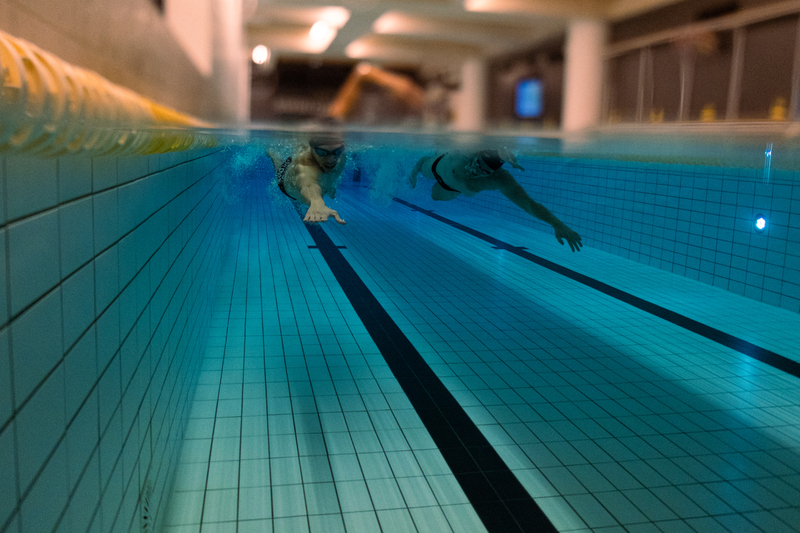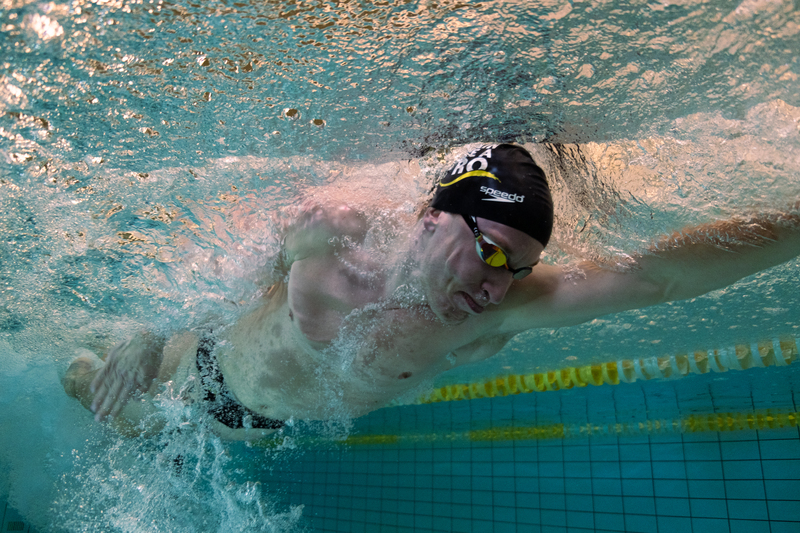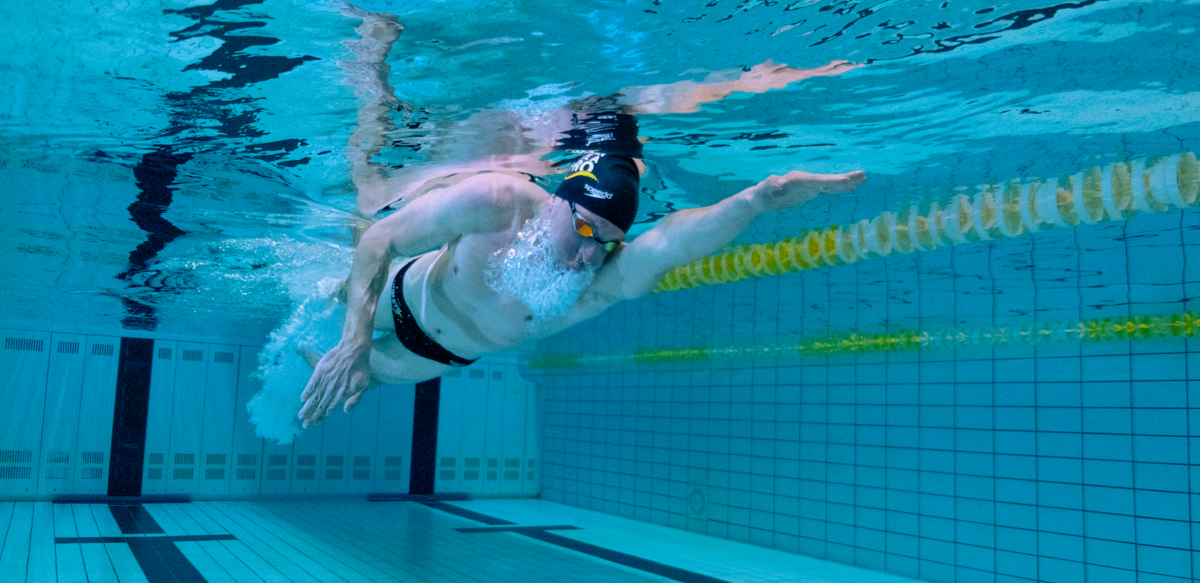Swimming blog - SWOLF yourself to an efficient freestyle
Efficiency and consistency. It is the holy grail of sport. In fact, it is the password to most things in life. How do you become a more efficient and consistent swimmer? It is a question, so frequently asked, we’ve dedicated this blog to one of it’s metrics. The SWOLF. What is it, the Swimming Wolf? Lurking in the deep dark waters of some lake to devour the unsuspected. No. Keep reading to find out what it is and how you can apply it to become the most consistent and efficient swimmer out there.
What does SWOLF stand for?
SWOLF is a made-up word between SWim and gOLF. In Golf, there is a par score per hole and the aim is to have as few strokes as possible per hole – on par or below. Swolf has the same aim of determining what your score is (number of strokes) per length and helping you to reduce that score. It’s a great measure and fun to put into practice. This score is unique to you, so try not to compare.
How do I score the SWOLF?
To get your SWOLF score, you add the number of strokes to the time you swim per length. Every hand entry is a stroke. So, for example, say you are swimming in a 25 meter pool and swim 25 seconds and take 25 strokes, then your SWOLF score will be 50.
Most modern sports watches will calculate the score for you. It will appear on the data you download from your watch. The data may not always be consistent. If you vary the distance of your underwaters or touch with a different hand every time you turn, then your watch may have a different count. Check it manually as well from time to time.

What does the SWOLF score mean?
In isolation very little. Over time and in the context of the intensity of your swimming it will make sense. Let’s unpack this a little further in the context of three swimmers: Caleb the Novice, John the Intermediate and Deborah the Pro swimmer:
SWOLF for Caleb - Motivation
Caleb is a novice. He has little swimming experience. He has difficulty swimming a 100 meter and stops often. His SWOLF will be high which means his distance per stroke is low (he is taking a lot of strokes) and speed is low. This is what we would expect from a beginner swimmer. Over time as Caleb gets better at displacing the water and fitter, we would expect to see that his SWOLF moves slowly downwards. In this sense, it is a measure of Caleb’s improving efficiency as he becomes a better swimmer.
This makes sense. Let’s take the following example. Caleb has been swimming for 2 months. He decides to measure his SWOLF over 25 meter. He does this four times and the average score is as follows: 32 seconds + 21 strokes = 53. Caleb has trouble with his breathing and takes short, quick strokes.
.jpg)
Two months later, after swimming the workouts at SwimGym, he took the test again. His breathing and stroke length has improved dramatically. This time he swims with 19 strokes in 28 seconds, which equals 47. His SWOLF is 6 points lower than two months earlier. This means he is getting faster while taking fewer strokes. A perfect combo for him and a great motivational tool to keep on trying to bring that number down.
This is low hanging fruit for Caleb and he loves knocking the number down. However, it is only 25 meter, and this does not say anything about his efficiency over a longer distance. What about swimmers who swim longer distances, like John?
John the Intermediate Swimmer – Pacing and consistency
For the intermediate swimmers the SWOLF will mean something else by asking a different question. Can and will the SWOLF stay the same over a longer swum distance? Here, it’s about hitting the same SWOLF number over longer distances. Same SWOLF means consistent swimming with regards to stroke length and speed.
Meet John, an intermediate swimmer. He can easily swim 200 meter continuously and his breathing is under control. John does have the issue that he starts too quickly and would like to work on his pacing over a longer distance using SWOLF. He has been asked to swim 300 meter and his SWOLF will be measured in the first 25 meter of each 100 meter.

His results tell us a lot about his ability to pace. First 25 meter his SWOLF is 42, then 44 and lastly 47. His SWOLF becomes higher, each time it's measured, this means he started too fast and can’t hold his technique and speed. We would want to see his SWOLF stay the same over the entirety of the 300 meter. John will have to experiment with a higher SWOLF of say 45 and first train to swim this consistently before trying to lower the score.
In this scenario John will have a SWOLF target for longer distances. His coach wants him to swim that SWOLF of 45 - 27 seconds per 25 meter with 18 strokes. Can he match this repeatedly and consistently in longer sets? If the answer is yes, then it means that John has learnt how to pace himself, a crucial skill in swimming.
SWOLF for Pro Swimmers like Deborah
Deborah can easily swim long distances and is able to swim the other strokes as well. How can she apply the SWOLF to her swimming?
For her as a Pro, the SWOLF will determine the optimum stroke count for a desired speed per length. The SWOLF could be mapped in an inverted Bell curve. The bottom of the curve being the sweet spot. The Curve moves left and right for different intensities. This combination of the number of strokes per length and speed becomes a fine tuning that ultimately allows Deborah to know how many strokes are the optimum per length for the speed she wants to swim.

What is the best SWOLF score?
It's unique to you: your body type and swimming experience. But compare yourself with the world’s best swimmers and see what their scores are and see if you can find a swimmer who resembles you in build and then try and get to their score.
SWOLF isn’t everything, but it's something. It's something that can motivate, measure consistency and ultimately give you insight into how efficient and consistent your swimming really is. It’s fun mostly, but just like Golf, it can be frustrating sometimes. When you hit the magic numbers, it will feel amazing though, and that’s what it’s all about!

